Gransfors Bruk Outdoor Axe vs Small Forest Axe

It can be hard to tell unless you see them side-by-side, but the Gransfors Bruk Small Forest Axe and Outdoor Axe are very different tools, for different jobs.
The Small Forest Axe is designed to flex between a hatchet and a boy’s axe. Large enough to use two-handed to fell smaller trees and clear trails while being compact enough to stow in a pack and use one-handed like a hatchet. It is meant for scenarios where you expect axe work, but need a lightweight portable axe.
The Outdoor Axe is a unique lightweight hatchet designed to be packed or easily carried as a belt axe when you aren’t expecting heavy axe work, but want to have one on hand. It is lighter than a standard hatchet but the straight 14″ handle allows you to put power behind it and use it effectively if the need arises.
Differences in the Axes
Once you see the axes or the stats side-by-side, you can start to appreciate how different these axes are.
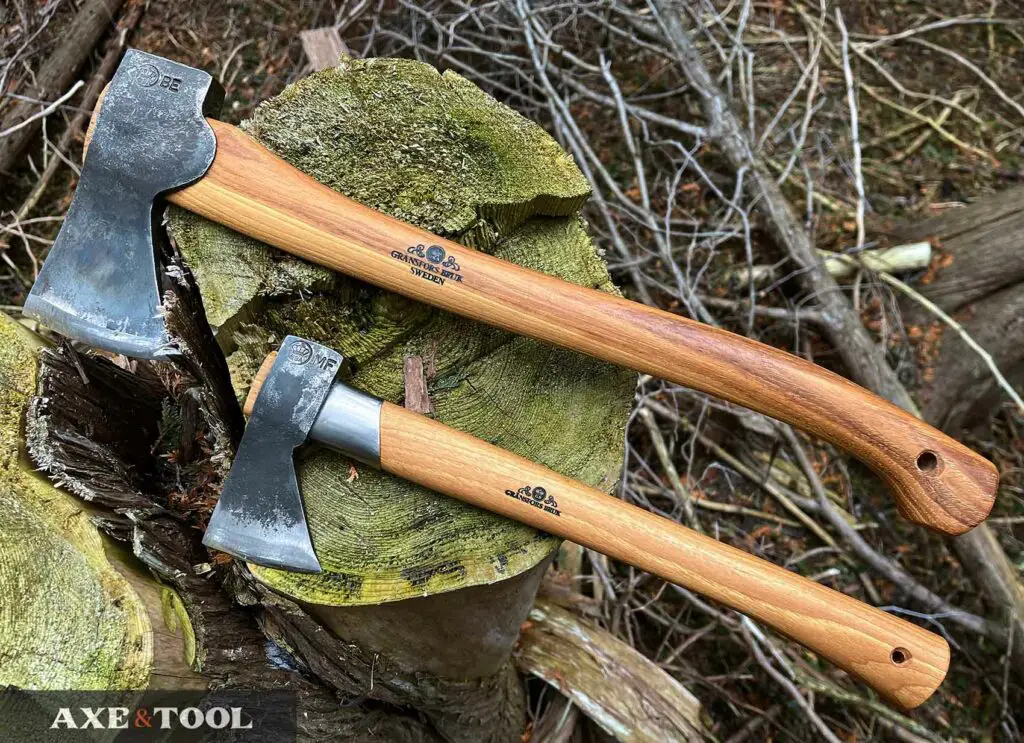
| Small Forest Axe | Outdoor Axe | |
|---|---|---|
| Head Weight | 1.65lbs (750g) | 0.75lbs (340g) |
| Length | 19″ (48cm) | 14″ (36cm) |
| Total Weight | 2.2lbs (985g) | 1.25lbs (560g) |
| Cutting Edge | 3.3″ (83mm) | 2.5″ (64mm) |
But there are differences in how these axes are designed, other than just size.
Differences in the Head
The Small Forest Axe has the now iconic Gransfors Bruk head design, with a long thin blade that sweeps up on the bottom to let your choke up for detailed work. Lugs drop down at the handle to hold the head tight to the handle. At (about) 1.65lbs is still on the lighter side compared to other axes its size.
The Outdoor Axe uses a small 0.75lb Hudson Bay pattern head that is lighter than any other axe on the market. The blade is shorter and more wedge-shaped to help compensate for the lack of weight, and the underside also angles up allowing the user to choke up.
There are no lugs which can be a weak point of the Hudson Bay pattern as the head has limited contact with the handle. However, the unique light head, rounded handle, and metal strike guard all help keep the head secure – and I have not had any problems even after heavy chopping.
Handle Design
At 19″ the Small Forest Axe is longer than a hatchet but can still fit inside most day packs. It gives the user enough length to maximize power by swinging two-handed to maximize power. Plus it is shaped to be really comfortable one-handed when held mid-handle or choked up under the head.
The handle is well shaped for easy transitions between holds and the blocky knob stops your hand well enough, plus can just fit in a tool loop, so you can hang it on your belt for trail work.
The Outdoor axe has a 14″ straight handle that is rounder than most hatchet handles and is inspired by the tomahawk and early belt axes. The metal collar has been added to protect from overstrikes, but also lets the handle be used to twist wood when splitting – the light head doesn’t get as many one-hit splits.
The straight handle has only a subtle palm swell, which allows you to use every inch of the handle to maximize speed and leverage to compensate for the light head and is also very easy to slide in and out of a belt, belt loop, or pack without catching.
Sheaths
Both sheaths are similar with a snap fixture that wraps around the handle, thin lightweight leather, and a proper welt to protect the blade.
The Small Forest Axe has a sheath that covers the blade, while The Outdoor Axe covers the whole head to protect your things or you from the pointy comers on the head if you stick it in your pack or on your belt.
How the Axes Perform
I have used both axes hiking, camping, and doing work around the property – in both summer and winter. And they have both been used to clear and break up small branches, chop logs, rough carve, and split kindling for fires.
While they could both do all of it – they handled the tasks very differently.
Chopping & Limbing
The Small Forest Axe is not as powerful or efficient as a typical boy’s axe, but it makes surprisingly quick work of trees or branches around 6-8″ wide. It could be pushed to deal with larger ones if needed, but that’s where it gets noticeably underpowered.
The weight and length allow you to clear smaller branches easily (high or low), and be used one-handed if needed. The relatively flat top of the head makes it quite easy to work near the ground.
When it comes to stripping and clearing little branches the axe is big enough to clear multiple in a single swing, with enough weight to carry though to the next one.
The Outdoor Axe was able to chop through a 6″ (that’s as big as I tried). It takes a lot more swings and was underpowered – but it chopped through it fine (better than I expected), and the lightweight head makes it easy to swing for longer periods. The long handle lets you whip the light head quite quickly, which helps compensate for the weight.
It was very effective clearing small branches up high and down low – but it requires more precision and targeting each branch one by one.
Splitting Kindling
Both these axes are capable of splitting kindling for a campfire but understandably the Small Forest Axe is going to outperform the Outdoor Axe.
The Small Forest Axe has enough weight to split seasoned firewood on a campsite or small logs you have bucked with the axe itself (if you are feeling that ambitious). The thin head isn’t great for splitting, but it’s big enough that it doesn’t really matter for standard kindling needs.
The Outdoor Axe can be used to split kindling on a campsite but don’t expect a lot of one-hit splits. The stout blade will wedge in quickly and get a split going, but it will take another whack or some twisting to pry the wood apart.
Unlike the Small Forest Axe, the short blade has trouble reaching the tough or twisted fibers you often find in stubborn wood.
Carving and Shaping
The Small Forest Axe has become an iconic Bushcraft axe, because of its ability to do heavier work but also be used for finer shaping. It can be used to do everything from shelter crafts to carving a spoon.
The Outdoor axe is a little more like using a knife, it doesn’t have the weight but you are holding it so close to the blade the control is very precise. It makes notches, cuts, and shapes fine, but it’s a little small for more extensive rough carving (not that I’m an expert at carving).
Conclusion
I really like both these axes, but they are for very different tasks. Really consider what is most important to your needs in a packable axe.
When to choose the Small Forest Axe
If you plan on doing axe work – felling trees, clearing branches, splitting large seasoned pieces of firewood the Small Forest Axes is without question a better choice.
It would be my choice for maintaining trails and work around the property. Those interested in larger bushcraft projects, and a better choice for standard campfire or campsite kindling.
If you found this helpful and planning to buy from amazon please show your support and click the link – it’s just a hobby (Small Forest Axe on Amazon).
When to Choose the Outdoor Axe
The Outdoor Axe is designed for when size and weight are more important than power and efficiency – even compared to a standard hatchet.
The Outdoor Axe has become one of my favorite axes for day hikes and extended backpacking trips, or even just a walk in the woods. It can easily be tossed in or on a pack and forgotten about – and is nimble and performs well when needed.
This could also be a great option for backwood camping, portages, or anyone who wants something a little different as their kit axe (Outdoor Axe on Amazon).
Please comment below If I missed something or if you have any questions. I do my best to respond to everyone.
About the author:
About the author:
Jim Bell | Site Creator
I’m just a guy who likes axes. I got tired of only finding crap websites, so I set out to build a better one myself.
I’m also on Instagram: @axeandtool

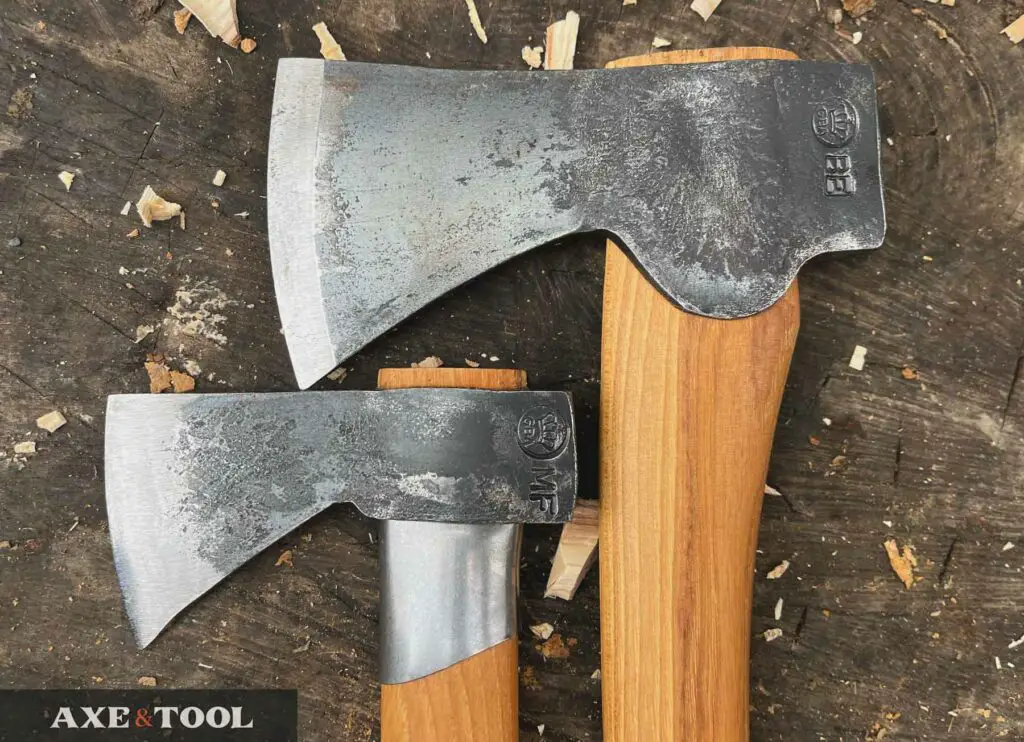



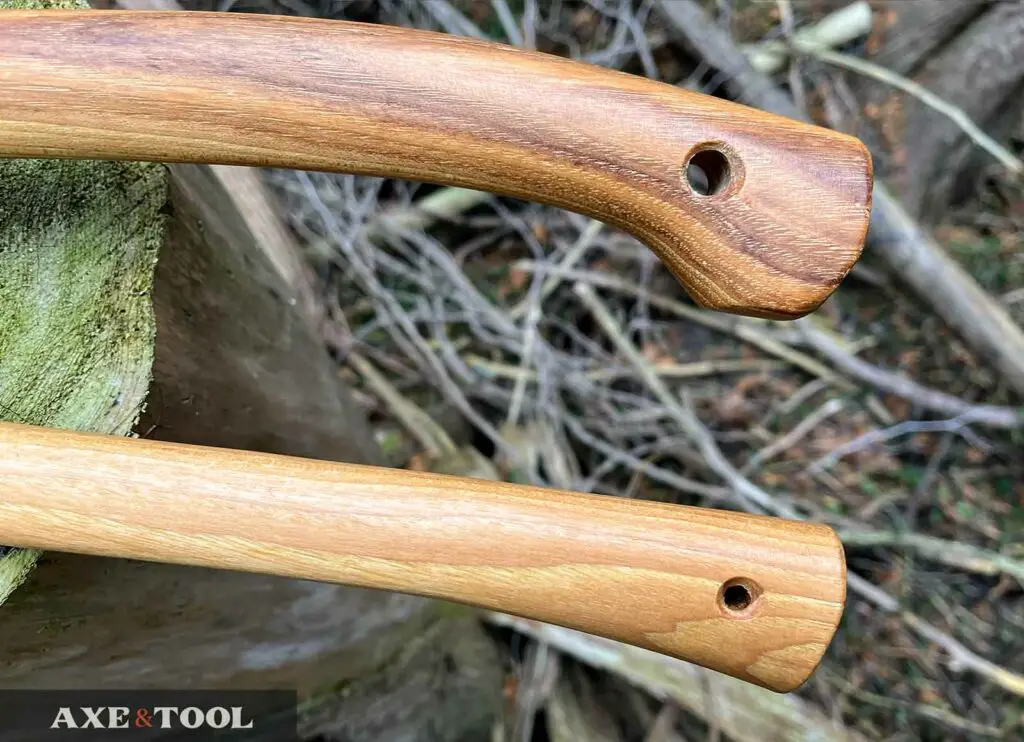
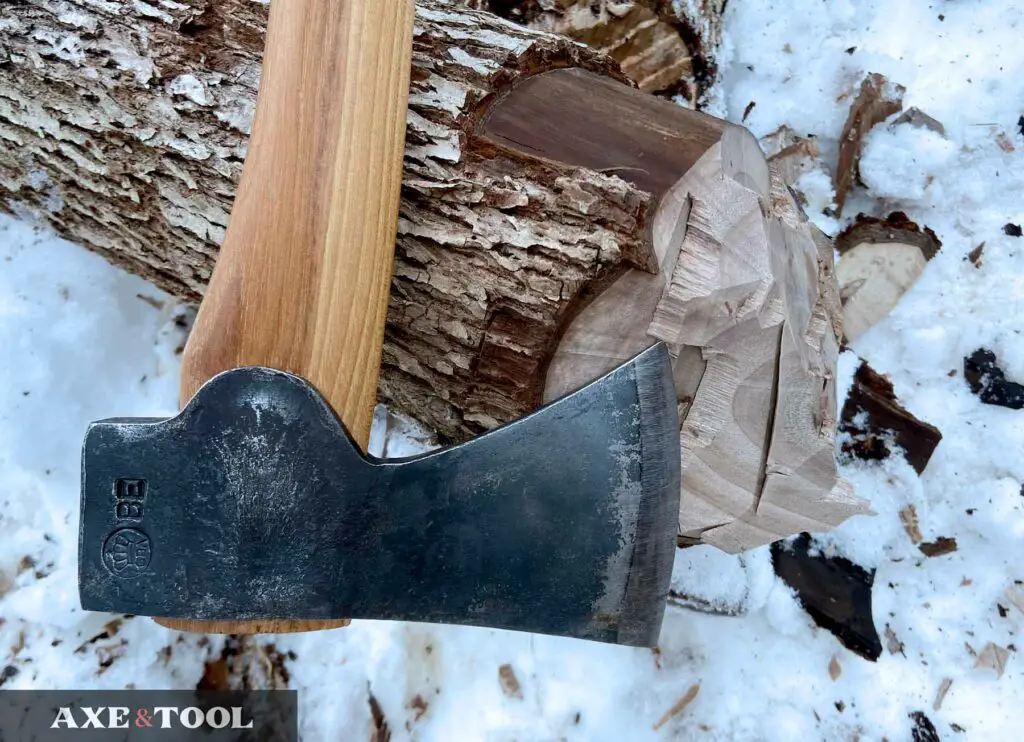
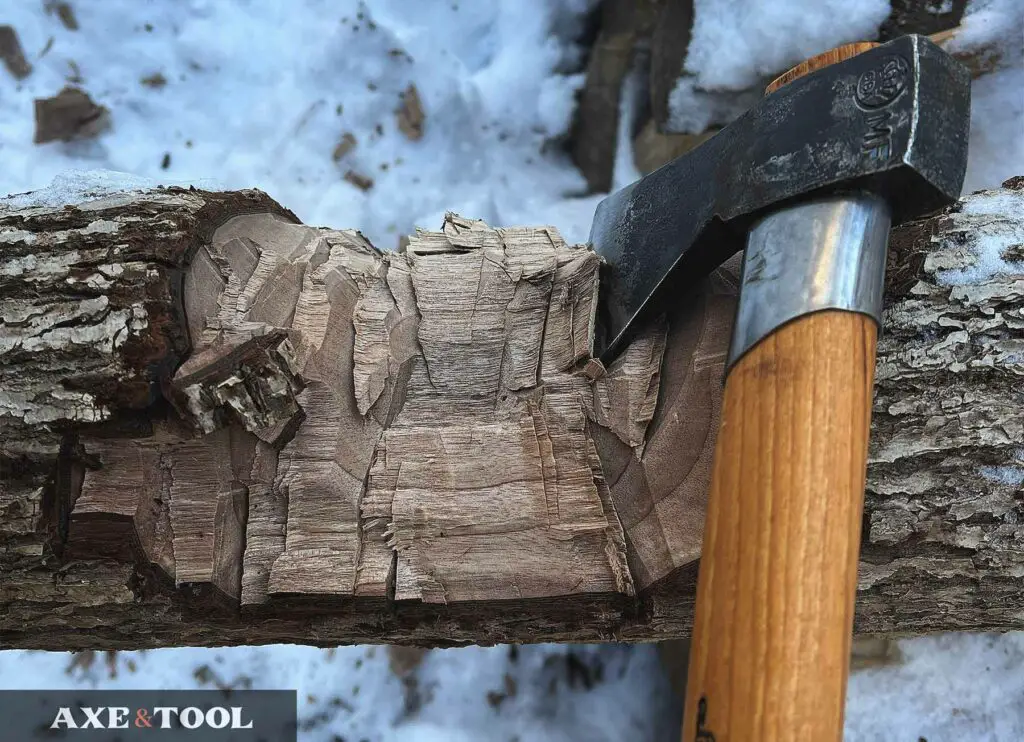

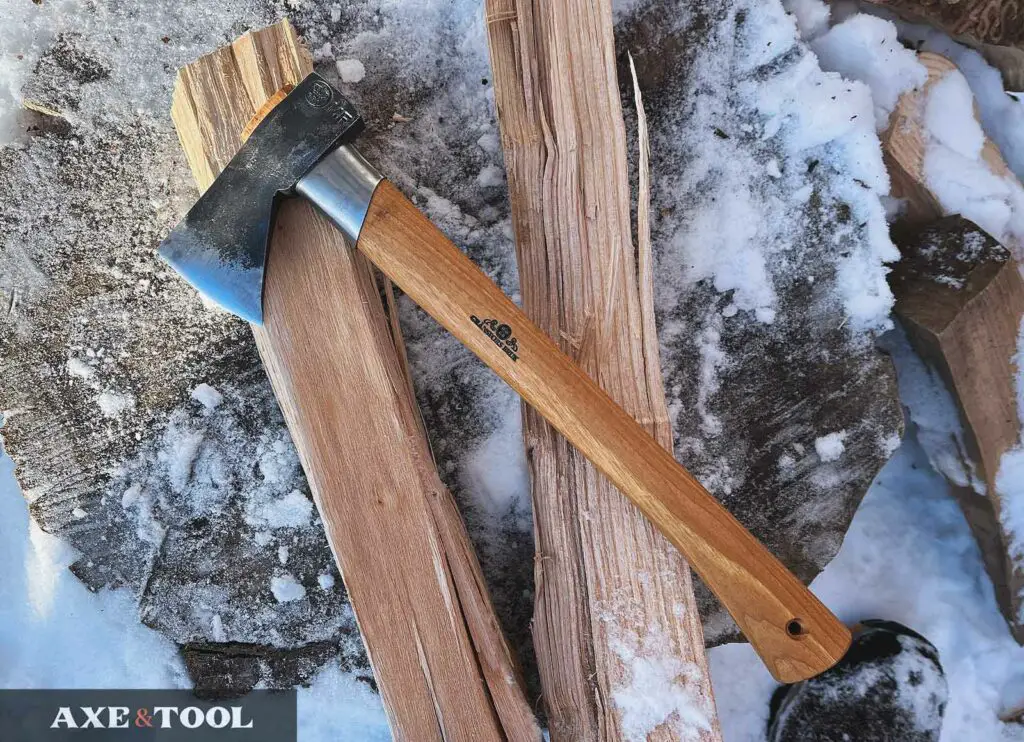
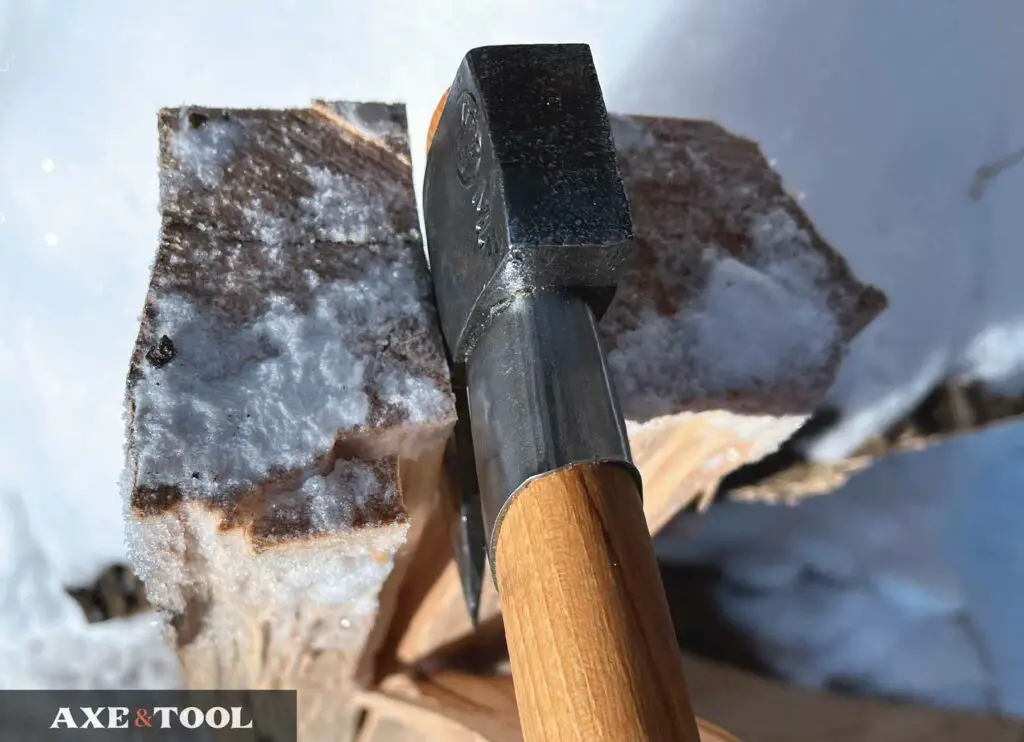
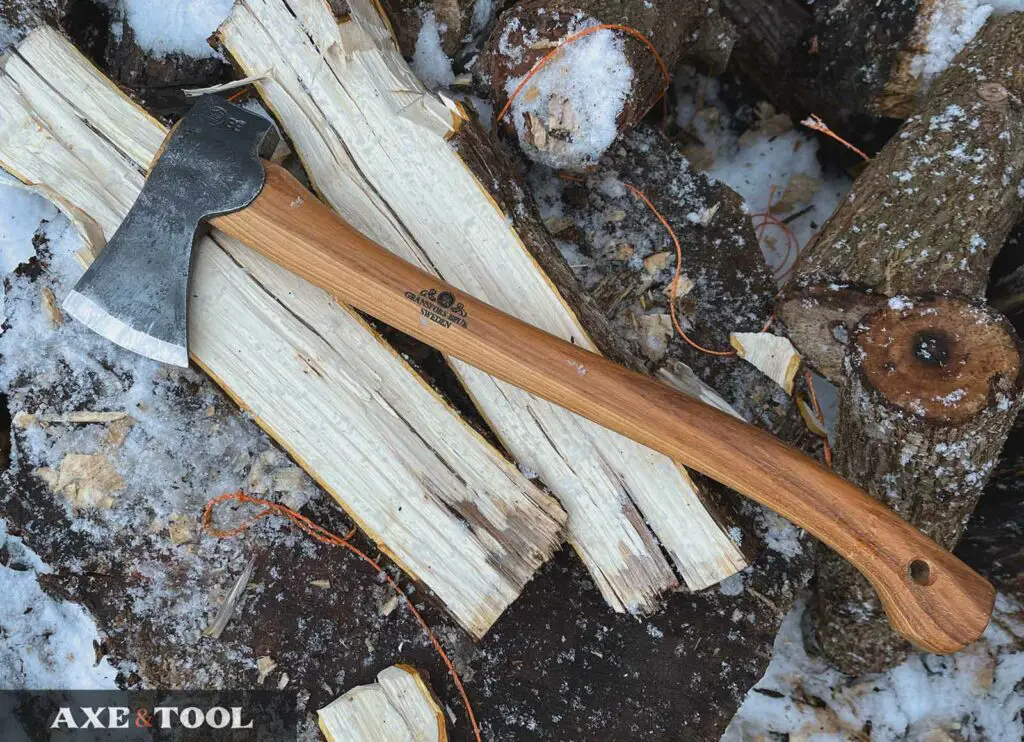

Thank you for this well-done comparison. I own both of these axes and think that your observations and insights align well with my experiences.
Gransfors Bruk puts metal collars on all their splitting axes. The fact that they put a collar on the Outdoor Axe (I believe) is an indication that they view it as a slitting tool… that can also do some chopping. The rather thick wedge profile – compared to the slim chopping profile found on all their other forest axes – reinforces the notion that this is a splitting tool first and foremost, with secondary chopping capabilities.
I went on a backcountry canoe trip in Keji National Park (Canada) one October. There was going to be a lot of portaging and weight reduction was high on the priorities list. I decided to take the Outdoor Axe for its lighter weight. I knew there was firewood pre-positioned at the campsites but had no idea what to actually expect on the ground. I like to burn small pieces of wood and bring my fires to completion with no half-burned big chunks left behind. Much of the firewood we had access to was fairly large like you would feed a woodstove. I used the Outdoor Axe to break it down smaller, often using it like a wedge and pounding it through with another piece of firewood. It got the job done fine.
Thanks for your insights, it’s really helpful for me to get other peoples takes (and verify my opinion isn’t nuts lol). I’ve been very impressed with the outdoor axe when backpacking, and plan to take in on my next backwood trip in May (Algonquin). The designer of the outdoor axe said he wanted it to be a mixed use tool that could be a backup for a knife and split small firewood. I think it leans more towards the second task, but it’s capable.